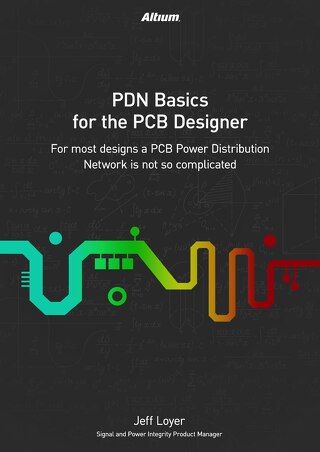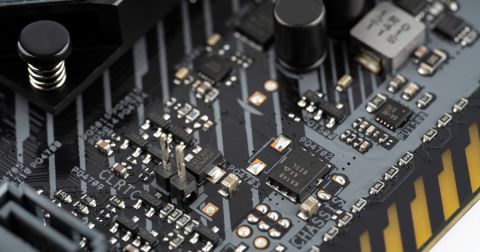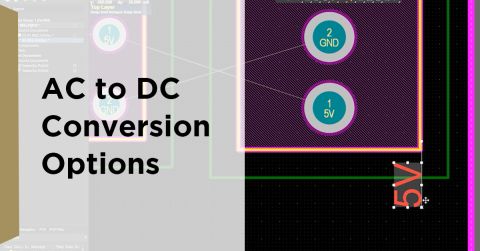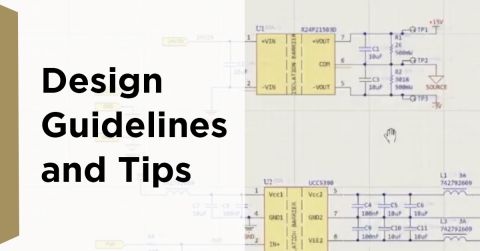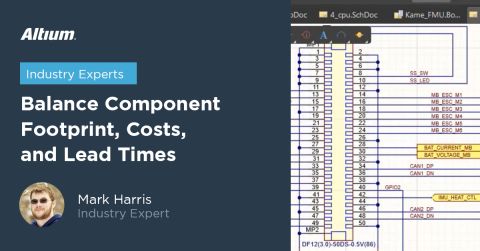Input Filter Design for a Switching Power Supply

Switching power suppliers present the designer with a challenge when it comes to effective filtering. First, the input filter must prevent noise on the input power lines from being conducted through the power supply to the output. Second, the input filter must prevent noise generated by the switching circuitry from appearing at the output. Third, the input filter must prevent the switching circuitry’s noise from being conducted back through the power supply to the input power lines. Thus, switching mode power supplies pose the most questions and test the designer’s skills the most regarding power supply filter design.
Passive RC Filters
The most basic input filter available is the RC filter. It has an application in low-power solutions where cost and component size are significant constraints. However, an LC filter will offer considerable advantages that limit RC filter usage in performance and efficiency.
Passive LC Filters
Passive LC filters can achieve the required results for input filtering in a relatively simple solution. The designer can trade-off performance against component size and cost to create an optimal solution.
An inductor in series between the supply voltage and the input to the switching power supply combined with a capacitor across the input to the switching power supply will act as an undamped low pass filter. Component values will determine the cut-off frequency and the damping factor of the filter, the damping factor determining the attenuation characteristics at the cut-off frequency. Therefore, the designer needs to ensure that the values are selected such that a poor damping factor cannot result in oscillations within the switching circuit control loop. A good rule of thumb is to aim for a minimum damping factor of 1/√2.
Damped LC Filters
Adding a second capacitor in series with a resistor across the input to the switching power supply immediately after the first main filter capacitor will change the filter to act as a parallel damped low-pass filter. The resistor reduces the peak input impedance of the filter at the cut-off frequency without affecting the cut-off frequency as long as the component values for the resistor and second capacitor are chosen correctly. The second capacitor must have a lower impedance than the resistor at the resonant frequency but significantly larger than the main filter capacitor.
An alternative option to the parallel damped low-pass filter is the series damped low-pass filter. Here, instead of a second capacitor, a second inductor in series with a resistor is placed across the first primary filter inductor. In this case, the second inductor must have a lower impedance than the resistor at the resonant frequency. The advantage of the parallel damped low-pass filter over the series damped low-pass filter is that it has a significantly better performance at high frequencies, making it better suited for switching power supplies.
Composite LC Filters
One downside for the designer is that LC filters typically require sizable components that can be difficult to install on a circuit board. A simple solution is to combine multiple LC filters. For example, creating a composite filter from an undamped low pass filter feeding a parallel damped low-pass filter will increase the component count but require much smaller component values and hence physically smaller parts. It also allows the designer to tune filter performance by having more factors to adjust using a simulation tool to optimize values.
Active Filters
Where performance requirements dictate, active filters can deliver significant benefits at the expense of increased design complexity along with component cost, footprint, and count. In simple terms, an active filter will provide a power gain in addition to the filtering function, typically using an operational amplifier or “op-amp.” An input signal passed through a series resistor into the op-amp plus feedback routed through a resistor in parallel with a capacitor will form an active low-pass filter. The advantage of active filtering is that it provides excellent output voltage regulation under changing loading. The downside, however, is that active filters have limitations when it comes to high frequencies, such are typically seen in switching power supplies. This drawback limits their usefulness in this application.
Component Selection
Capacitors are critical components in switching power supply filters, and their performance can make or break the effectiveness of any filter design. Therefore, choosing the right type of filter can be critical, particularly the equivalent series resistance (ESR) and equivalent series inductance (ESL), directly affecting the filter response characteristics.
Ceramic capacitors offer the best general performance in switching power supply applications. In addition, they have the lowest ESR and ESL, producing the best results for AC ripple reduction. They offer the most stable performance over their lifetime and come in a wide range of temperature ratings. They also come in a broad range of packaging formats. However, their construction makes them the most susceptible to damage from physical shock and vibrations, which may be a design factor.
Film capacitors offer the best performance in switching power supply applications with high current requirements while still relatively low-cost and small-sized. However, their ESR and ESL are higher than the equivalent ceramic capacitors, and they are less tolerant to over-voltage conditions.
Aluminum electrolytic capacitors are low-cost and physically small, which has made them the most popular capacitor type for designers. However, they have a relatively high ESR which can significantly affect performance at high frequencies. Also, their performance and capacitance can substantially degrade over the life of the component.
Tantalum capacitors offer better performance than an aluminum electrolytic capacitor in general terms but with a higher unit cost. However, they are not suited to high frequency or high voltage applications, limiting their use in switching power supplies.
For more information on capacitor choice, see my article on which type of capacitor you should use.
Summary
When designing filtering for switching power supplies, the designer has a broad range of options that can be matched against their specific requirements. Once a circuit type is chosen, the component choice can then off trade-off options to optimize filter performance.
Have more questions about an input filter design for switching power supplies? Call an expert at Altium and discover how we can help you with your next PCB design. You can download a free trial of Altium Designer here.
